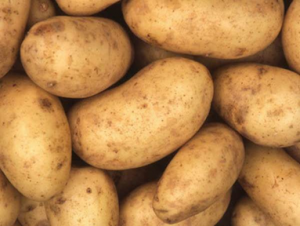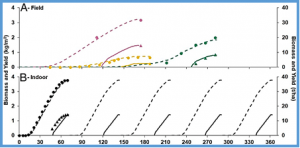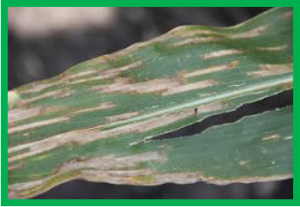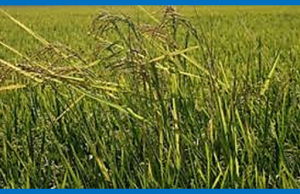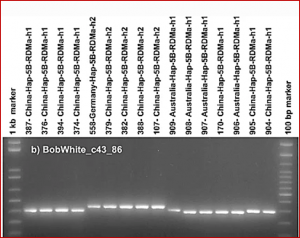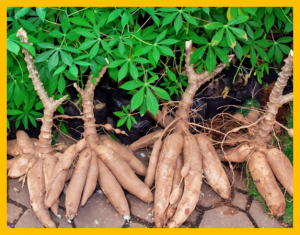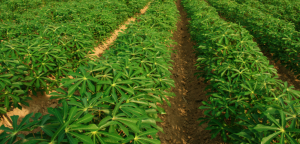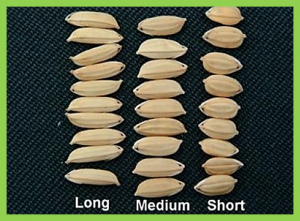Genome assembly of polyploid plant genomes is a laborious task as they contain more than two copies of the genome, are often highly heterozygous with a high level of repetitive DNA. Next Generation genome sequencing data representing one Chilean and five Peruvian polyploid potato (Solanum spp.) landrace genomes was used to construct genome assemblies comprising five taxa
Scaling current cereal production to a growing global population will be a challenge. Wheat supplies approximately one-fifth of the calories and protein for human diets. Vertical farming is a possible promising option for increasing future wheat production. Here we show that wheat grown on a single hectare of land in a 10-layer indoor vertical facility could produce from 700 ± 40 t/ha (measured) to a maximum of 1,940 ± 230 t/ha (estimated)
Grey leaf spot (GLS), caused by Cercospora zeae-maydis or Cercospora zeina, is a highly destructive foliar disease worldwide. However, the mechanism of resistance against GLS is not well understood. To study the inheritance of this resistance, we developed two doubled haploid (DH) populations sharing a common resistant parent. The two DH populations were grown in two locations representing the typical maize-growing mountain area in Southwest China for 2 years.
Two major types of weedy rice are recognized in the USA based on morphology: straw-hull (SH) and black-hull awned (BHA) weedy rice. We performed whole-genome resequencing of a SH weedy rice ‘PSRR-1’, a BHA weedy rice ‘BHA1115’, and a japonica cultivar ‘Cypress’ to delineate genome-wide differences and their relevance to genetics and evolution of weedy attributes. The high-quality reads were uniformly distributed with 82–88% genome coverage.
Overcoming polyploidy pitfalls: a user guide for effective SNP conversion into KASP markers in wheat
Kompetitive allele-specific PCR (KASP) markers are commonly used in marker-assisted commercial plant breeding due to their cost-effectiveness and throughput for high sample volumes. However, conversion of trait-linked SNP markers from array-based SNP detection technologies into KASP markers is particularly challenging in polyploid crop species, due to the presence of highly similar homeologous and paralogous genome sequences.
Cassava is cultivated due to its drought tolerance and high carbohydrate-containing storage roots. The lack of uniformity and irregular shape of storage roots poses constraints on harvesting and post-harvest processing. Here, we phenotyped the Genetic gain and offspring (C1) populations from the International Institute of Tropical Agriculture (IITA) breeding program using image analysis of storage root photographs taken in the field. In the genome-wide association analysis (GWAS), we detected for most shape and size-related traits, QTL on chromosomes 1 and 12. In a previous study, we found the QTL on chromosome 12 to be associated with cassava mosaic disease (CMD) resistance.
Cassava is a staple food crop in sub-Saharan Africa; it is a rich source of carbohydrates and proteins which currently supports livelihoods of more than 800 million people worldwide. However, its continued production is at stake due to vector-transmitted diseases such as Cassava mosaic disease and Cassava brown streak disease. Currently, the management and control of viral diseases in cassava relies mainly on virus-resistant cultivars of cassava. Thus, the discovery of new target genes for plant virus resistance is essential for the development of more cassava varieties by conventional breeding or genetic engineering.
It is often very difficult to isolate a minor QTL that is closely linked to a major QTL in rice. In this study, we focused on the isolation of a minor grain length QTL, small grain 3 (SG3), which is closely linked to the major QTL grain size 3 (GS3). The genetic effect of SG3 on grain length was dependent on GS3 status. Its genetic effect was larger in the presence of nonfunctional sg3 than functional SG3.
Mungbean (Vigna radiata [L.] Wilczek), an important source of carbohydrate and protein in Asia, is characterized by nonsynchronous pod maturity; consequently, harvesting is labor intensive. Because pod maturity is associated with synthesis and remobilization of sucrose, we examined changes in sucrose levels and transcriptome in leaf (source) tissues after pod (sink) removal using two genotypes, VC1973A and V2984; VC1973A had higher synchronicity in pod maturity than V2984. After pod removal, much higher number of pods were produced in V2984 than VC1973A.
Plant breeding is a key element for future agricultural production that needs to cope with a growing human population and climate change. However, the process of developing suitable cultivars is time-consuming, not least because of the long generation times of crops. Recently, speed breeding has been introduced for long-day crops, but a similar protocol for short-day crops is lacking to date. In this study, we present a speed breeding protocol based on light-emitting diodes (LEDs) that allow to modify light quality


 Curently online :
Curently online :
 Total visitors :
Total visitors :
